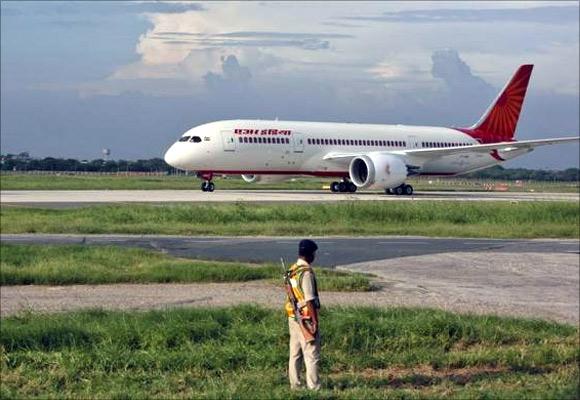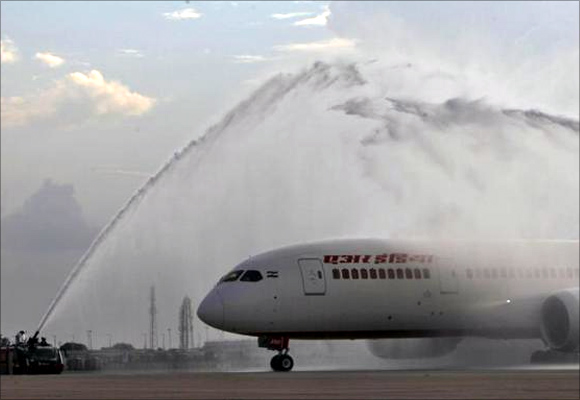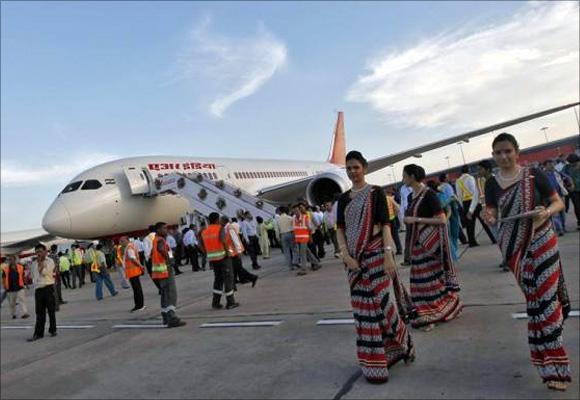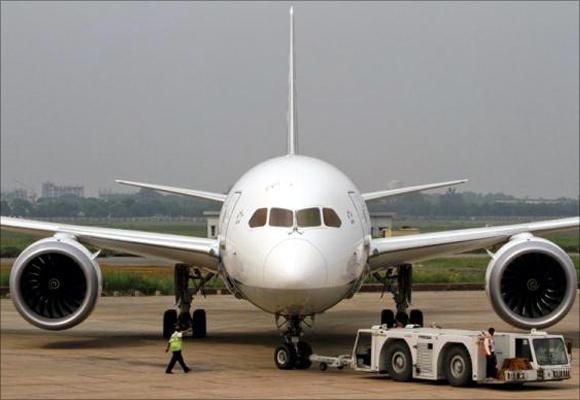
Former Executive Director of Air India, Jitender Bhargava presents an insider's view of the fall of this storied airline in this exclusive book excerpt.
In Agatha Christie's detective novel Murder on the Orient Express, investigator Hercule Poirot is initially nonplussed by a murder victim who seems to have died from several stab wounds.
Some wounds are deep, while some are from barely minor blows. Some stabs seem to have been inflicted by right-handers and others by a left-hander. Before long, Poirot has 12 suspects - each with a motive, but all with convincing alibis - and a stalemate.
It is only when he puts all the facts together that he arrives at an unusual conclusion: all of them did it. All of the 12 suspects were extracting revenge on behalf of a three-year-old girl who was kidnapped and killed by the gangster - the stab victim on the Orient Express.
If one were to ask, 'Who killed Air India?' the answer would have to be something similar - perhaps all of them. Further, if we were to ask if it was murder or suicide, the answer would have to be that it was both.
There were aspects of Air India's steady decline that had elements of a deliberate abetment of murder, but others that suggest suicide - the people who could have prevented it just didn't act.
Despite the best of avowed intentions, several strategic plans and scores of revival blueprints, the airline has steadfastly refused to emerge from the intensive care unit. Apportioning the blame is an unending exercise, since there is so much of it to go around, and so many to anoint it with.
...

Let's go over the list of suspects. Should we blame the government of India, which, as owner, should have been more careful with policy making for the aviation business?
Should the Ministry of Civil Aviation, as the administrative controller of the airline, be taken to task for failing to read the writing on the wall even as Air India gradually slipped into a state of coma?
Should the board of directors, as the trustees of the airline's interests and future, be made answerable for failing to draw up a coherent strategy for growth and being silent witnesses - or even active collaborators - to its destruction?
Should the successive chairmen of Air India be brought to the stand for abandoning the airline in its hour of need and its senior management for looking the other way? Or what about the employees, including the union leaders, who made unreasonable demands on the airline?
ONWARD THE DESCENT OF AIR INDIA
There was never a lack of grandiose plans. Year after year, the people in charge and the airline's multiple stakeholders spoke about the need to transform the national carrier into a premier airline. But their plans, instead of taking Air India to the promised heights, brought it down.
Some of the decisions impacted the financial health of the airline as the expenditures envisaged were way beyond the airline's means.
Some decisions curbed the airline's ability to meet the competition, while others crippled its revenue-earning potential due to the withdrawal of flights and resultant contraction of network and failure to operationalise strategic business units for ground-handling and engineering services.
...

In some cases, good initiatives were killed simply because of inordinate delays in taking decisions or for implementing the same in a shoddy manner. What lessons do we draw from this?
Air India failed to take action against the people who allowed its survival plans to fall by the wayside. It also chose to stay the course when the paths chosen were leading it nowhere.
Why did an airline committed to growth let itself be hijacked by vested interests? And when its appointed saviours proved incompetent or uninterested, why did the government continue to let them hold office?
The airline owner's lack of interest in its well-being leads one to suspect that there was perhaps a deliberate plan to financially incapacitate Air India and marginalise it.
The List of Suspects for Murder:
The question of whether it was murder does not seem so far-fetched when one looks at the comments and recommendations made by two parliamentary committees - the Standing Committee on Transport, Tourism and Culture, headed by Sitaram Yechury, and the Committee on Public Undertakings, headed by V. Kishore Chandra Deo - after they probed the Air India mess during 2008 and 2009.
They were extremely critical of the way the airline had been managed and made several pertinent and remedial suggestions - all of which were ignored. The reports corroborate what I have believed for very long: the airline had been let down by the very people who had been entrusted with its care.
...

The various chairmen who had moved in and out of office, particularly after 2003, were responsible for most of the damage done to the airline by either acquiescing with the unreasonable demands of the politicians and the trade unions or, in some cases, not resisting or opposing them strongly enough.
Responsibility also rests with the ministry, which did not appoint the right people, and with the prime minister's office, which refused to respond to pleas for help. Sunil Arora, the former chairman-cum-managing director (CMD) of the erstwhile Indian Airlines, for instance, wrote to Cabinet Secretary B. K. Chaturvedi in June 2005 complaining about the pressure being mounted on him to take a certain stance on leasing and purchase of aircraft for Air India.
This was ignored either conveniently or deliberately. The Central Vigilance Commission displayed a lack of interest in holding persons accountable for acts of commission and omission.
And when Air India Board member V Subramanian asked some pointed questions at a board meeting, he was immediately transferred out of the ministry. All of this indicates a larger game plan, implying an intentional objective to destroy Air India once and for all.
Let us look at some of the important decisions that should have helped Air India but didn't. These were all decisions taken to make Air India a premier airline, but they were either abandoned or allowed to unravel even before they had reached a reasonable size and scale.
Issues like the acquisition of aircraft in numbers that were far in excess of what Air India could afford or gainfully deploy, the leasing of aircraft in a manner that was certain to do harm, a recklessly implemented merger, and extravagant expenses incurred at a time when the airline was starved of working capital have been elaborately dealt with in the earlier chapters.
But numerous other decisions have crippled the airline; it is as if the strategic blueprint had been scripted to achieve the result that is evident now but was made to look like an attempt to transform Air India into a premier airline…
THE DESCENT OF AIR INDIA
Author: Jitender Bhargava
Publisher: Bloomsbury India
Pages: 272
Price: Rs 499